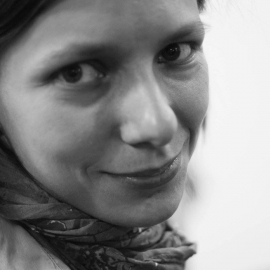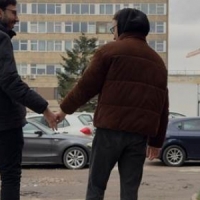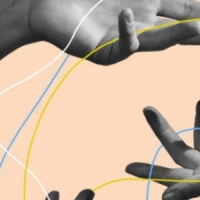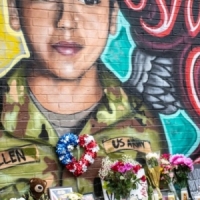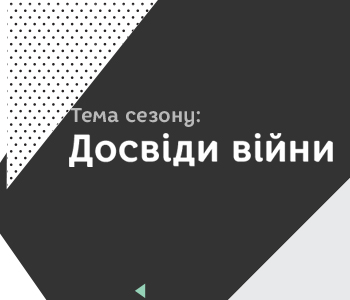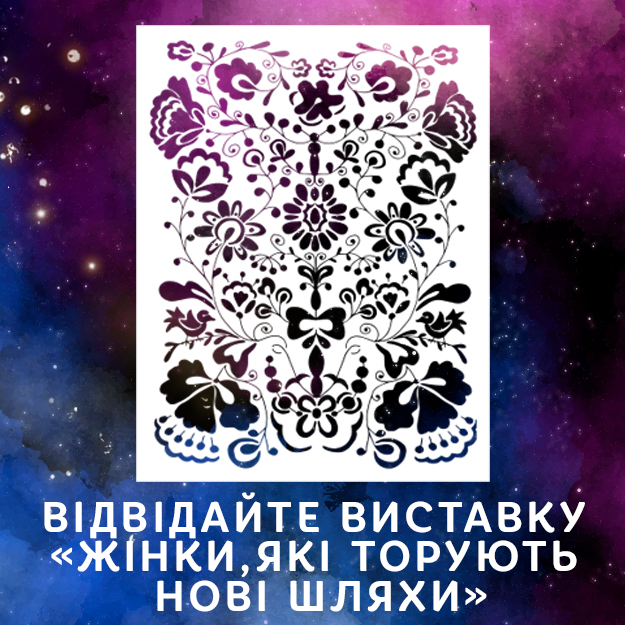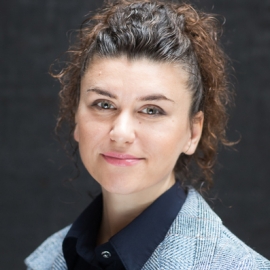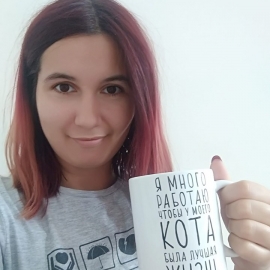Historically, military structures have been predominantly male institutions, and thus not free from sexism. The Ukrainian army is no exception, but by defending against Russia’s armed aggression, it plays an extremely important role not only in the defense of its own territory, but also in global military, food, and environmental security.
This requires the army to be as efficient as possible, which includes overcoming prejudices and obstacles that may prevent women in the military from fulfilling their functional duties. In addition, Ukraine is building a tolerant, human-centered society, and gender equality is one aspect. That is why overcoming sexism in the Armed Forces of Ukraine is so important.
This text is a brief overview of the main manifestations of sexism in the army over a certain period and a presentation of the most egregious cases. The article concludes with recommendations for change that civil society should advocate for.
The period before Ukraine’s independence
The specialized website Gender in Detail has already written in detail[1] about the inherited problems of the Ukrainian army, which continue from the Soviet army as its immediate predecessor. Soviet gender policy was only initially aimed at the emancipation of women; it quickly changed to viewing both men and women as a mere resource for an undemocratic state, with few specific differences. In World War II, the USSR actively recruited women as a conscription resource for the war effort, but their contribution is very incompletely reflected in commemorative practices. In general, the visibility of women soldiers and veterans was extremely low.
Later, in order to stimulate the birth rate and having disguised it as “protection of mothers and children,” women were excluded from any harmful and difficult physical work, including combat positions in the army. This finally cemented the division into “female” and “male” positions and military professions. The Soviet army evolved into the post-Soviet Ukrainian army and existed without significant changes until 2014.
The historical situation in non-Soviet Ukrainian military formations was not much better. The history of women’s participation in the Ukrainian Sich Riflemen units shows that men’s attitudes toward women who served with them were not fundamentally equal: women were subject to “punishment” and “all sorts of irritating remarks and interference from some male comrades.”
Olena Stepaniv, the first female officer of the time, admitted that women’s participation in military formations was chaotic, and the role that could be assigned to women consciously remained unclear, given the practical realities of the struggle. By 1919, she herself gradually became opposed to the mass participation of women in combat.[2]
Later, in the Ukrainian Insurgent Army (UPA), women served as liaisons, nurses, typists, scouts, and housekeepers, which were mostly auxiliary, albeit dangerous, roles, and did not directly take part in hostilities.[3] Gender inequality also existed here not only in the distribution of functions: women occasionally became mistresses of their immediate superiors. According to historian Marta Havryshko, this clearly hints that men abused their status.[4]
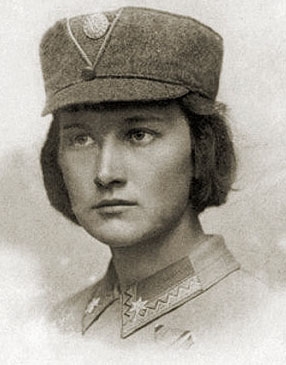
Olena Stepaniv
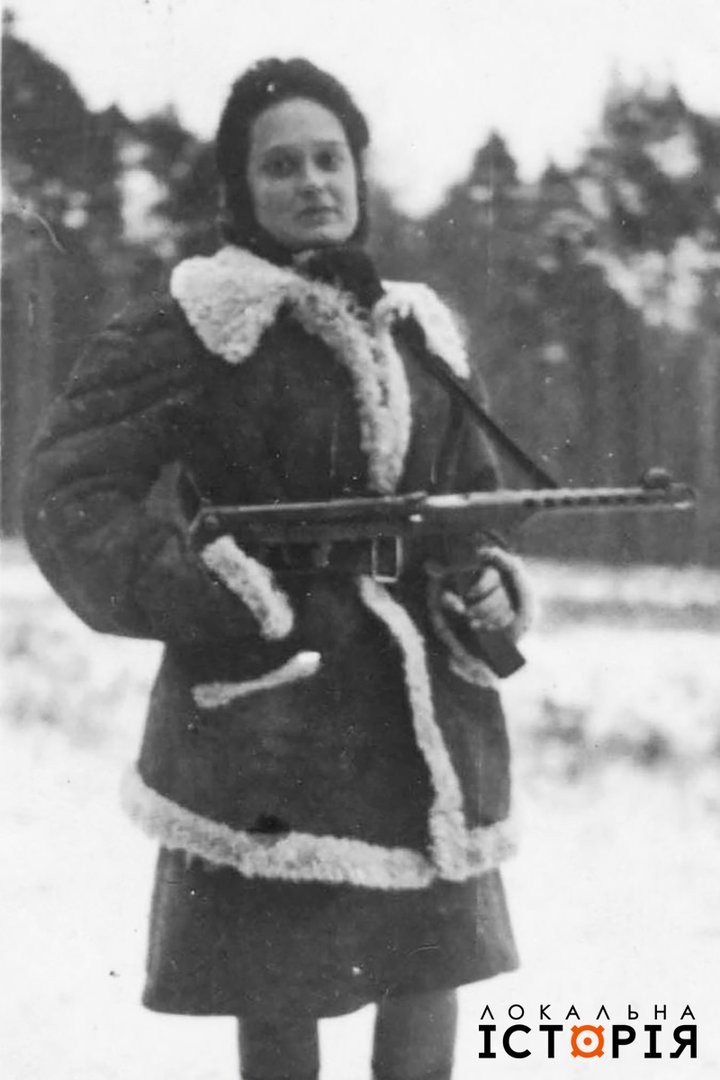
The district leader of the Ukrainian Red Cross in Yaroslavshchyna, a leader of the women's network of the OUN district "Baturyn" in Zakerzonnia, Maria Labunka (née Rovenchuk).
In contrast to the Soviet army, where internal policies were largely dictated from above, members of grassroots armed groups were more likely to reproduce behavioral norms and attitudes that they had learned from civilian life. However, in both cases, there was no real gender equality.
Sexism before 2014
Until Russia’s military invasion in 2014 and a little later, the Ukrainian army inherited a predominantly Soviet army with all its problems, including the lack of women’s right to hold most combat and leadership positions.
The military positions that women soldiers could hold as privates, sergeants, and officers were defined by Ministry of Defense Order #337 of 27 May 2014. Women could only hold positions primarily related to the care and maintenance of positions related to combat, such as nurses, canteen managers, telephone operators, or seamstresses, but could not be grenade launchers, machine gunners, service dog trainers, or even interpreters.
Changes in this area were achieved only in 2016 thanks to the Invisible Battalion advocacy campaign, which showed the strong participation of women in the Anti-Terrorist Operation (ATO) [the name for the Ukrainian army’s military activities in the east after Russia’s 2014 invasion –Translator) since 2014 without proper visibility, legal and infrastructural recognition, and reward.
Until 2014, the army had a phenomenon typical of low status jobs: the feminization of poverty. The percentage of women gradually increased, but only because men avoided these jobs. Between 2001 and 2006, the total number of military personnel decreased, while the number of female service members increased in all categories. Most of them were wives, daughters, and relatives of military personnel.[5]
In 2008, the Ministry of Defense introduced the position of “officer in charge of gender policy,” which was filled by a servicewoman, Natalia Dubchak. In 2010, the position was abolished, and Natalia Dubchak became a pro bono advisor to the Minister of Defense on gender policy.[6]
Ms. Dubchak talks about the attitude of some of her male colleagues to women’s access to military professions: “We drafted two new Minister of Defense orders (developed by my colleagues in the personnel policy department) approving the list of military professions that can be held by servicewomen. Why are there two of them? Because one concerns women officers, and the other concerns women in contract service... I remember these debates, where some representatives of the General Staff Department were sitting and saying, ‘There is nothing for these women to do there, where they are going, they will not want to serve, they will not want to serve. What, they will go to the front line if necessary?’”[7]
There is a curious story about how really unprepared the army was to incorporate women. The tie, which is mandatory in women’s military uniforms, was attached to the shirt with a special clasp in the shape of a trident, but the uniform designers did not take into account that women’s shirts are fastened on the left, not the right side, so women soldiers had to wear the state symbol upside down.[8]
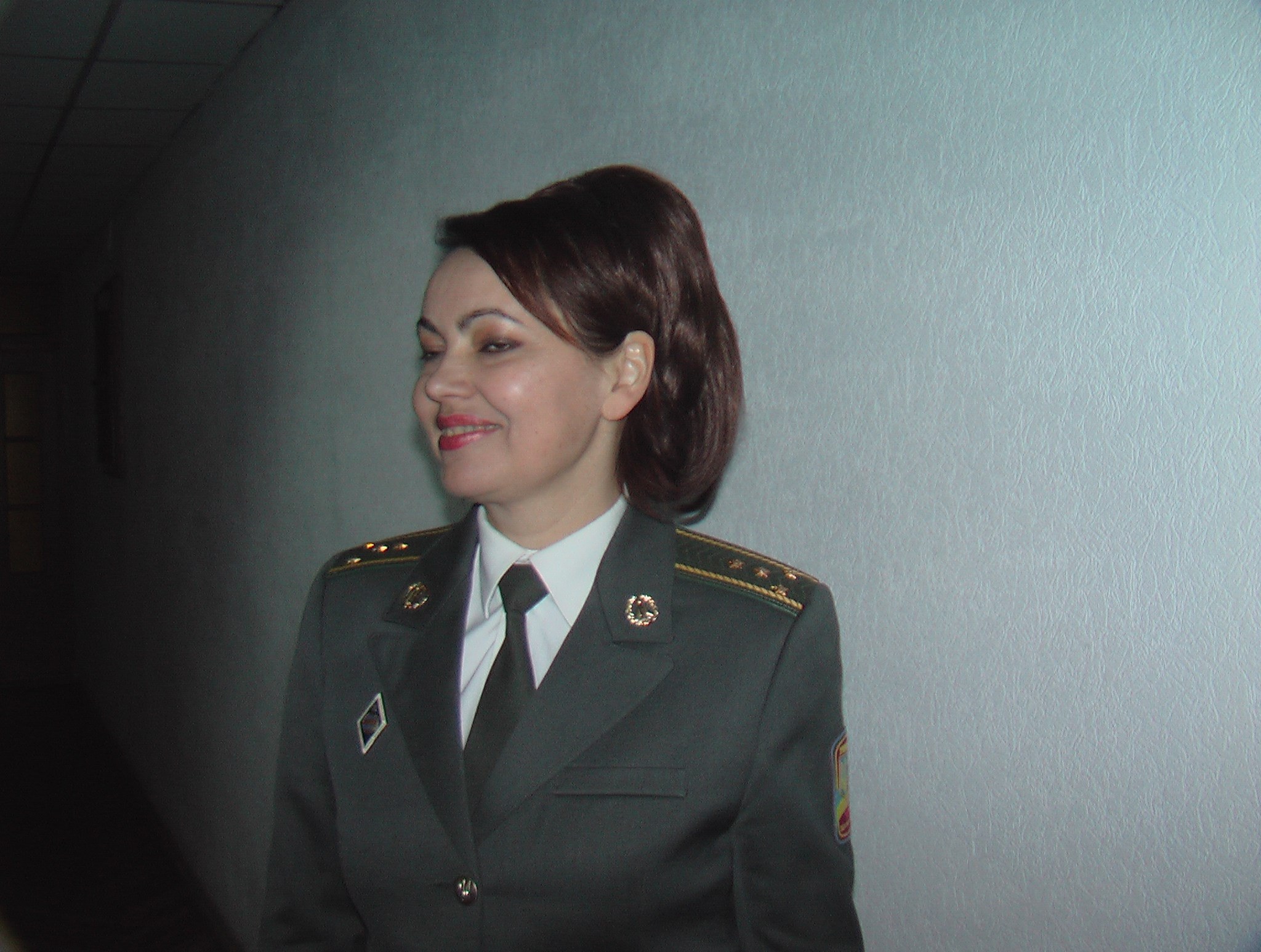
Nataliia Dubchak
There was also gender discrimination in the Ministry of Defense. For example, a woman who worked as a chief specialist in the military policy department, had eight years of experience in the ministry and the “best specialist” award, was fired along with other female employees by the newly appointed director of the department without any legal grounds. Later, she was offered a new position with half the seniority and wage. The department head explained that the woman could not hold the chief specialist position because she had no military service experience. After that, the woman received a position in the ministry, but in a different department. An internal investigation was initiated against her without any grounds. After the investigation was closed, the department head personally threatened that if the woman refused to resign, he would initiate a new investigation and create impossible working conditions for her.[9]
The guidebook “Actual Problems of Gender Policy in the Armed Forces of Ukraine” (2011), edited by Borys Andresiuk, notes “the ability of women present in the military environment to culturally enrich, ennoble relations in the military team, and stimulate the social and service activity of men.”[10] The word “ability” here points to an allegedly natural trait that women possess, rather than to socialization in the female gender, acquired over the years. The reference to such “abilities” itself is a classic example of benevolent sexism: the positive qualities of women, which serve the male part of the team, are listed. In the same text, there is a reference to Otto Weininger’s Gender and Character, a classic sexist work that influenced traditionalist thought, including Julius Evola.
It would be unfair to only criticize without noting the positive aspects. The guidebook simultaneously refers to the need to counteract gender discrimination, particularly such aspects as sexual harassment and vertical and horizontal segregation. It is a positive development that the problem was voiced, albeit no steps were taken to address it.
Natalia Dubchak also pointed out the need to ensure proper medical care for women in the military by introducing mandatory accounting and analysis of the morbidity of women in the military in order to determine the impact of the service conditions in certain positions on their morbidity and reproductive functions; to study the issue and, if possible, increase the number of women’s wards in hospitals.[11]
This problem has not yet been resolved. On August 22, 2022, Special Operations Forces soldier Andriana Arekhta spoke at the VI International Veterans Forum “Ukraine. Defenders. The Future”, where she described her rehabilitation experience after a mine explosion. In the military hospital where Andriana was treated after her injury, there was no separate female ward in the polytrauma department, and she could only be placed separately in gastroenterology, which caused additional pain when moving from the ward to the operating room.
Sexism after 2014
At the end of 2015, with the support of the Ukrainian Women’s Fund and with the assistance of UN Women, the Invisible Battalion study was conducted, which started the advocacy campaign of the same name for gender equality in the security sector. Since 2015, the campaign has achieved the following:
- Legislative attention to ensuring gender equality in the military (the Ministry of Defense lifted restrictions on combat positions for women, including officers; amendments were made to the Law “On Military Duty and Military Service” to strengthen gender equality; a mechanism for responding to sexual harassment was developed with the participation of the General Staff);
- Partially overcoming vertical gender segregation in the Armed Forces (the number of female officers has tripled and several women have been promoted to generals);
- A gradual shift away from paternalistic state policy towards women (the list of 450 prohibited professions for civilian women was abolished, although the maximum cargo lifting limits for women are still in place);
- The Armed Forces infrastructure is being adapted to the needs of women (female summer uniform and underwear were approved);
- A partial departure from sexist rhetoric expressed by public figures regarding women in military (the word “defenders” [of female gender, tr.] was added to the name of the state holiday, Defenders’ Day);
- A noticeable increase in the media visibility of women in the security sector and coverage of the issues they currently face;
- Including women in the security sector as target groups in the National Action Plan for the implementation of UN Security Council Resolution 1325 “Women, Peace and Security”;
- Increased subjectivity of servicewomen and female veterans in civil society (in particular, forming the Women’s Veterans Movement).
However, there were rollbacks and scandals both during the campaign and in the work of civil society and government agencies to develop and affirm new values, despite the general trend toward overcoming sexism and achieving gender equality. In early January 2016, servicewomen and activists had to picket the Ministry of Defense after the commander of military unit A1314, Major General Serhiy Nayev, commanded on December 5, 2015, to temporarily suspend the recruitment of women for military service on a contract basis.[12] The order was canceled as a result of the campaign, but work on the problem of discrimination against women has only just begun.
In 2017, an all-army competition was initiated with the benevolently sexist name “Berehynia v pogonakh” [“Goddess in epaulettes” – Editor]. The authors of this ill-timed idea were the Main Military Medical Directorate, the Main Directorate for Moral and Psychological Support of the Armed Forces, the Ministry of Defense Communications and Press Directorate, its central print organ, the Narodna Armiya newspaper, and the Ukrainian Military Medical Academy. The competition was held among military medics and included a file in evening dresses, a demonstration of creative talents, and an assessment of professional medical skills and athletic performance.[13] The competition ran until 2020.
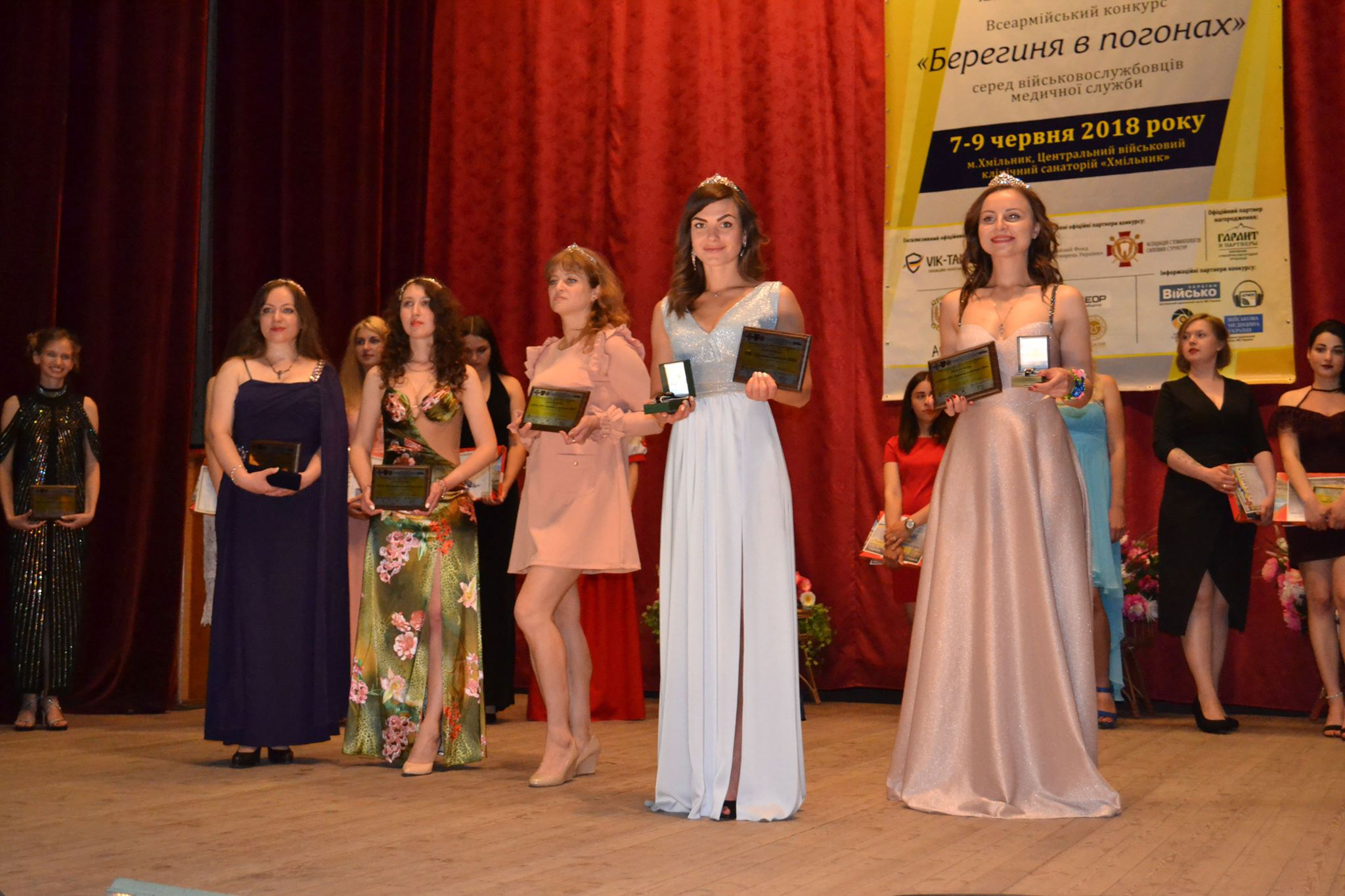
Participants of the "Berehynia (female guardian) in Uniform 2018" competition.
Not only representatives of rear units, but also ATO participants took part in the contest. Zaxid.net commented on it: “All participants have gone through selection in their units and institutions. The combat girls wrote tests, swam, and sing for two days. Marine Olena did 32 push-ups in a minute. After the trenches of Shyrokyne [actual combat zone – Translator], it’s a cakewalk for her.”[14]

A meme from the page "X-press officer
In 2021, Ukrainian social media were outraged by the official announcement of the Independence Day parade, where cadets of the Military Institute of Taras Shevchenko National University of Kyiv were preparing to march in the Prussian step wearing high-heeled shoes, which are part of the women’s ceremonial military uniform. After a lengthy scandal that even reached the rostrum of the Verkhovna Rada, the shoes were replaced with more comfortable ones.[16]

Cadets in heels
The problem of sexist attitudes toward women in the Armed Forces persists. The media cite examples such as when soldier Lesia Hanzha, transferring from one unit to another, learned that her future company commander was “totally against women,” and reconnaissance platoon commander Yulia Mykytenko testified that after her appointment to this position, male soldiers refused to serve under a woman. She also experienced unethical comments about her after her husband’s death.[17]
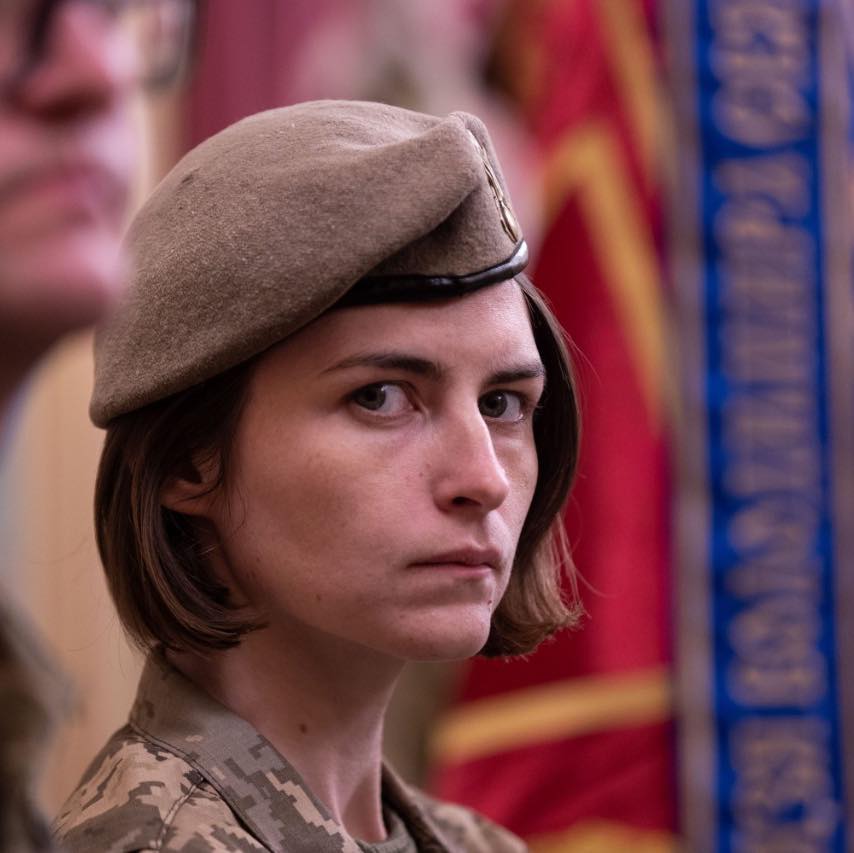
Yuliia Mykytenko
The issue of sexual harassment in the Armed Forces of Ukraine is worth a separate remark. This phenomenon occurs in all countries around the world in completely different spheres of life, including the military. As elsewhere, victims are reluctant to speak publicly about this issue, and in Ukraine they are also afraid of being accused of discrediting the army in a country at war.
Currently, servicewomen who have been sexually harassed can only get help from human rights organizations. As of the beginning of 2023, it is known that the JurFem association of women lawyers is handling four such cases, and the hotlines of the non-governmental organizations (NGOs) La Strada and Legal Hundred have received two and one appeal, respectively.[18] In reality, there may be many more incidents, but the real numbers are unknown. Human rights organizations can only provide legal support, and the quality of the case remains on the conscience of the judiciary, so there is no guarantee that cases will be resolved in favor of the victims, which also demotivates women to seek help.
Nevertheless, in recent years, two servicewomen decided to speak publicly about this issue. In 2018, Lieutenant Valeriia Sikal reported long-term systematic harassment by Colonel Viktor Ivaniv. In 2021, Lieutenant Colonel Olha Derkach stated that she had long endured systematic harassment by Colonel Oleksandr Kryvoruchko. In both cases, the women claimed that there were other victims. Criminal cases were opened, but due to the full-scale invasion, both cases were suspended.[19] This is not a promising example for anyone.
There was some progress in combating sexual harassment in the military in 2021. The Gender Advisor to the Commander-in-Chief of the Armed Forces of Ukraine and the NGOs Legal Hundred, Institute of Gender Programs, and Women’s Veterans’ Movement developed a detailed system for identifying sexual harassment cases, responding, investigating, and officially inspecting. The system provided for creating institutional mechanisms for proper response and assistance. At that time, the only specialized response mechanism was a formal hotline, which did not have established systems for processing and storing the data received and responding to reported cases, or qualified employees to handle complaints from victims of sexual harassment. The developments were presented at the “Army Built on Trust” forum organized by the Armed Forces of Ukraine in October 2021, but the mechanism has not been implemented.[20]
Since the Armed Forces of Ukraine do not have an effective policy on sexual harassment, there is no policy on sexism as such. As a result, military personnel are free to express sexist prejudices against women privately and publicly, without any warnings or consequences.
In 2023, the sexism of Third Assault Brigade soldiers on the YouTube channel DVIZH gained public attention. A comedian in civilian life, Vitktor Rozovyi compared women who are fighting to children and dogs. The episode also featured jokes about how women can be useful in the army, with a lot of innuendo. Read more about it here.
After public outcry from women soldiers, no one from the brigade’s office apologized. Viktor Rozovyi continued to joke on his social media, and the soldiers decided to cement their sexist status in the New Year’s issue of DVIZH. A soldier with the call sign “Bot” advised a girl who expressed a desire to serve in the brigade to cook borscht. He then launched into an angry tirade about the war being “a man’s world” and about women who “have intruded everywhere” and want “quotas” and “equal rights.”
Shortly after the Third Assault Brigade scandal, Anton Chicha, commander of the Kraken assault company, stated his position. “I am against [girls in the army]. I will not take a girl to my company,” Anton said in the YouTube show Viddushivdushu.[21] The fighter noted that there are females in the army who perform many functions. However, Chicha himself is against females in combat positions, allegedly because of their “unstable psyche.”
Currently, the only resistance to soldiers’ public sexism is society’s reaction, as the command ignores such cases. This aggravates the situation, because civilians’ critique of the military, even if it is for sexism and misogyny, is rejected altogether by the military itself and by parts of society.
The issue of gender mainstreaming of veterans’ policy remains problematic due to the almost complete absence of such a policy. On the one hand, the register of female and male veterans, which was at the disposal of the Ministry of Veterans Affairs until 2022, has expired, NGOs that provided services to female and male veterans have largely re-profiled to provide volunteer assistance to the army, and a full return to peaceful life is impossible because Ukraine is at war. On the other hand, the Ministry has not yet proposed even an approximate version of a concept of veteran’s policy that could be used to work on gender sensitivity. In the face of such profound ambiguity, the efficiency of further work in this area is questionable, at least until the situation is clarified.
Gender consulting. Recommendations
To summarize, the most pressing problems for servicewomen are unequal treatment in combat positions and promotions, lack of an effective mechanism to combat sexual harassment and sexism, insufficient provision of uniforms, armor protection elements according to anthropometric data, medical services and hygiene products, and the lack of a veterans’ policy as such. However, there are other suggestions for gender policy in the security sector.
Civil society organizations recommend adopting two draft laws that strengthen gender equality in the Armed Forces. Draft law #5713 aims to regulate issues related to parental leave in connection with the birth of a child; compensation for unused leave for persons with children; providing sanatorium treatment, material and other support; equal access to officer positions; and mandatory official investigations in case of signs of discrimination based on beliefs and grounds defined in Article 24 of the Constitution of Ukraine. Draft law #5714 proposes equalizing the rights of men and women in the military in terms of prosecution for military offenses and crimes by lifting restrictions on penalties and punishments for women, such as detention in the brig and detention in a disciplinary battalion.
It is also recommended to increase the number of staff positions for gender advisors (currently there are 142 in the Armed Forces, but almost all of them are not staffed), and to train and certify female candidates for this position.
Conclusions
The problem of sexism in the world’s armies has always existed. The army of independent Ukraine, and the military structures that preceded it, has not been an exception to this rule. This article only briefly outlines the most egregious cases and the most common problems.
Only systematic work on solving specific problems can improve the situation, and this article outlines proposals for them. The Invisible Battalion advocacy project and other civil society organizations have been working in this area for a long time.
However, servicewomen themselves are the main stakeholders in reducing sexism in the security sector, as well as the main drivers of positive change. They are fighting for gender equality and a safe and tolerant state by giving a positive example to women who serve after them and by their daily struggle for equal treatment. And they should be supported as much as possible in this endeavor.
Illustrations: Wikipedia; Vasyl Havryshchuk’s personal archive / Local History; Natalia Dubchak’s personal Facebook page; Alla Kornienko / Zhyttia Obriyii. Khmilnyk News; X Press Officer; Army Inform; Yulia Mykytenko’s personal Facebook page
This project is implemented with the support of the Swedish Institute.
[1] Hrytsenko, Anna. How women have changed the Ukrainian army // Gender in detail. - 2019. - October 10: https://genderindetail.org.ua/season-topic/gender-after-euromaidan/yak-zhinki-zminili-ukrainsku-armiyu-1341190.html.
[2] Baidak, Mariana. Olena Stepaniv: one of the first Ukrainian women soldiers // Gender in detail. - 2021. - March 30: https://genderindetail.org.ua/spetsialni-rubriki/zhinky-yaki-toruyit-novi-shliachy/olena-stepaniv.html.
[3] Popeliuk, Roksolana. Support Front: Women in the Ukrainian Resistance Movement // Local History. - 2022. - February 1: https://localhistory.org.ua/texts/statti/front-pidtrimki-zhinki-v-ukrayinskomu-rusi-oporu/.
[4] Havryshko, Marta. Gender Aspects of Sexual Morality in the OUN and UPA in the 1940s and 1950s // Ukrainian Liberation Movement. 2015 - No. 20 - P. 199-213.
[5] Dubchak, Natalia. Women in the Armed Forces of Ukraine: Problems of Gender Policy // Strategic Priorities. - 2008. - No. 4 (9).
[6] “Invisible Battalion”: Women’s Participation in Military Operations in the ATO: (Sociological Research) / Edited by Tamara Martsenyuk - Kyiv, 2015. - P. 19-20.
[7] Ibid. - P. 17.
[8] Women in a Time of Change, 1989-2009: Poland, the Czech Republic, Slovakia, East Germany and Ukraine. - G. Böll Foundation in Ukraine, 2012. - P. 114.
[9] On the brink: addressing discrimination and inequality in Ukraine // The Equal Rights Trust Country Report Series: 5. - London, 2015. - P. 58-59.
[10] Actual problems of gender policy in the Armed Forces of Ukraine: Educational and methodological manual edited by B. P. Andresiuk - K.: Research and Development Center of the General Staff of the Armed Forces of Ukraine, 2011.
[11] Dubchak, Natalia. Women in the Armed Forces of Ukraine: Problems of Gender Policy // Strategic Priorities. - 2008. - No. 4 (9).
[12] Plokhotnyuk, Natalia. We are not cooks, but full-fledged fighters: does not war have a female face?” // Kyiv Vechirniy. - 2016. - January 24: https://vechirniy.kyiv.ua/news/3205/.
[13] Kornienko, Alla. “Berehynia in uniform” // Zhyttevi obriyii. News of Khmilnyk. - 2018. - June 15: https://gazetahm.org/posts/berehynia-v-pohonakh.
[14] Herun, Yuriy. In Truskavets, military nurses competed in a beauty contest // Zaxid.net. - 2017. - March 10: https://zaxid.net/u_truskavtsi_viyskovi_medsestri_zmagalis_u_konkursi_krasi_n1420215.
[15] https://www.facebook.com/Xprofficer/posts/pfbid035K2ZjAt8wRWtikFT4Xffe88eRZ7nFo7BpGBRisfZ3VEAAGLQeyKLXQLrsDXBugjBl?__tn__=%2CO*F
[16] Vyacheslav Masnyi, Anna Pogrebna. Parade in heels. Servicewomen have their shoes replaced with lower-heeled boots // Suspilne. News. - 2021. - July 2: https://suspilne.media/144081-parad-na-pidborah-nardepi-vimagaut-vid-minoboroni-provesti-rozsliduvanna-gendernogo-skandalu/.
[17] Sokolova-Stekh, Anna. Women in the Armed Forces of Ukraine: “The desire to serve is perceived as a whim” // Deutsche Welle. - October 9, 2023: https://www.dw.com/uk/zinki-v-zsu-bazanna-sluziti-sprijmaut-za-primhu/a-66995226.
[18] NB 5.0. Monitoring of Recommendations and Research Results from the Invisible Battalion cycle / Edited by Tamara Martsenyuk. - Kyiv, 2023. - P. 54-55.
[19] Ibid. - P. 58.
[20] Ibid. pp. 61-62.
[21] YouTube channel VIDDUSHIVDUSHU. Chicha / KRAKEN’s reaction to the Farion scandal / How were collaborators caught and Kupyansk liberated?
